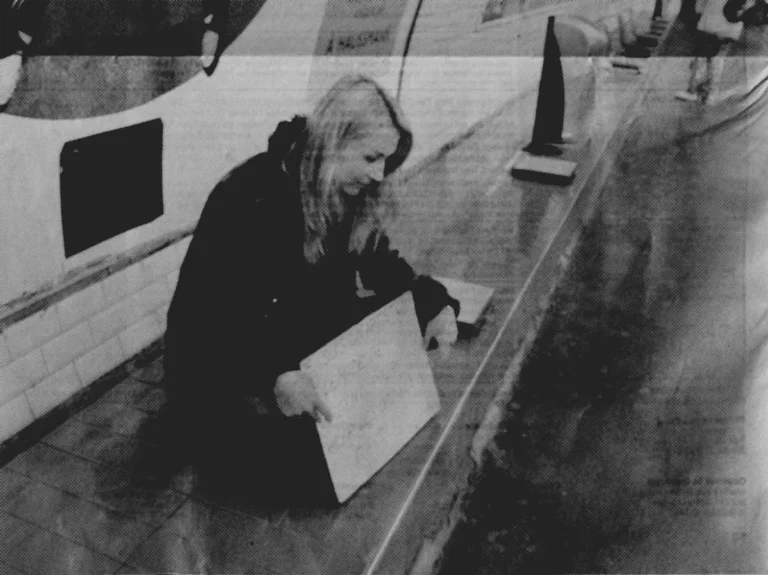JE SUIS
2013
Je suis un artiste. Je demande de l’argent pour cr’eer des oeuvres d’art.
I am an artist. I collect money to create a work of art.
Jestem artystą. Zbieram pieniądze na stworzenie dzieła sztuki.
Ich bin eine Künstlerin. Ich sammle Geld, um ein Kunstwerk zu schaffen.
Som umelec. Zbieram peniaze na vytvorenie umeleckého diela.
Jaz sem umetnik. Zbiram denar za ustvarjanje umetniškega dela.
Я – художник. Я собираю деньги, чтобы создать произведение искусства.
Ja sam umetnik. Skupljam novac za stvaranje umetnickog dela.
Ja sam umjetnik. Prikupljam novac za stvaranje umjetničkog djela.
나는 화가예요. 미술작업을 위해서 돈을 모았어요
Can a parasite become infected? Probably not. This is why artists don’t get health insurance. Whoever heard of worms being insured. Worms are to be exterminated, not bred to thrive and prosper. Take tapeworm for example. It wiggles and lives, feeding on what a human eats. Ten sandwiches is not enough. Always insatiable. I read somewhere that there are women who swallow these worms as part of a gain-loss programme. Well then, perhaps there are some benefits to having a parasite in your organism? It’s probably a question of finding the right target. It’s exactly the same with art. To an average person a slab of meat might be of more interest. But you need to be careful with that. Undercooked pork may conceal cysticerci – the larva form of tapeworm. Even ignorance won’t protect you from the parasite. What’s to be done then? Must the artist-parasite be left to the mercy of the minority prepared to respect and appreciate her beneficial properties? Well, apparently. What else is there? Tapeworm lovers are likely as few and far between as art lovers. We all learn about the anatomy of this flatworm in biology lessons. In elementary school at that. We are still children when we struggle with quizzes on their life cycle. And what goes on in the musty room when art classes are taught by the religion teacher? We play the hangman, eat up our lunches, and pick our noses.
Apart from the digestive system, we should pay attention to languages. The bicep is less important than the tongue. Everyday struggle becomes the gym for this fold of muscle. Manipulating this inconspicuous piece of flesh makes all communication possible. Even the most conceptual art requires matter. It requires the existence of a brain, of tissue, of gyri. It requires digestion, metabolism, defecation. Outside corporeality we encounter lack. Let us tear out this thing. What will be left? This dark, dank, empty cavity. Language is a mighty tool. And it has the capacity for extraterritorialisation. The metaphor of language sips into all activities related to creativity, to all sort of artistic work – when we operate in matter, we create languages. Languages as tools and languages as systems. Many levels at once. We make slimy things, surrounded by furrows, crevices – but if we go further, something peers from beyond them, something else. Tongue transcends borders – as a medium susceptible to transformation, as a fold we may operate with – it enables communication with those who practiced their own in a slightly different manner. On words with similar meaning, but entirely different sound. Times are tough. What an unbearable cliché! As we know, emigration is sometimes the golden mean. But you have to know foreign languages. Or at least be able to translate one sentence: I am an artist. I’m raising money to create a work of art.
Text: Małgorzata Kulik

